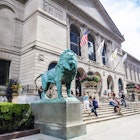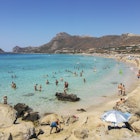
What does ChichУЉn БѕГйГњУЁ mean? Unveiling the name and history of this Maya wonder

Nov 10, 2024 тЂ 8 min read

ТЉOle Steffensen/500px
The Maya have long awakened travelersт curiosity because of the many mysteries surrounding this pre-Hispanic civilization. For one thing, the city of ChichУЉn БѕГйГњУЁ in central Mexico was abandoned by its inhabitants т seemingly without explanation т centuries before the Spaniards arrived at the shores that would one day become the YucatУЁn Peninsula.
From its astronomical alignments to its intricate connection with the natural world, here's more about ChichУЉn БѕГйГњУЁтs history and significance to help you get the most out of your visit.

What is ChichУЉn БѕГйГњУЁ?
ChichУЉn БѕГйГњУЁ was once one of the most important cities in the Maya world, flourishing between 550 and 1200 CE, though the exact dates are debated. Spanning about 4 square miles today, the city likely covered closer to 10 square miles at its peak. Home to approximately 35,000 people, ChichУЉn БѕГйГњУЁ was a hub of trade, politics, and spiritual significance.
Archaeologists believe that a тsacred geographyт led the Maya to design ChichУЉn БѕГйГњУЁ. There appears to be a correlation throughout Mesoamerica between the landscape beneath the earthтs surface and the Maya constructions above it. The pattern seems to be that structures are built near caves, tunnels or cenotes.
Caves were important to the Maya cosmos т where eternal darkness reigned and important deities lived. If a balance wasnтt maintained between them, misfortune could occur. If, on the other hand, order prevails in that region, riches such as rain are bestowed on the land. El Osario building, for example, is built over a natural cavern.
ChichУЉn БѕГйГњУЁ was never forgotten by locals, but it wasnтt until the 19th century that the broader world learned of its grandeur from explorers such as John Llyod Stephens and Frederick Catherwood. Their findings sparked worldwide interest, and subsequent excavations in the 20th century revealed more of the cityтs significance. Today, ChichУЉn БѕГйГњУЁ is a UNESCO World Heritage Site and a living reminder of the Mayaтs extraordinary civilization.

Special features at ChichУЉn БѕГйГњУЁ
El Castillo
The Temple of Kukulcan, better known as El Castillo (тThe Castleт), is the main building at ChichУЉn БѕГйГњУЁ. Itтs nearly 79 feet high and has a total of 365 steps т one for each day of the year. The temple itself is found all the way at the top and studies have shown that there could be a large body of water beneath it, which archaeologists take to be a cenote.
El Caracol
Known as тThe Snailт on account of the spiral shape it hides within, El Caracol is considered to be an observatory, with astronomy as its main function. Openings in its walls and dome face towards Venus and align with certain stars on specific dates. Interestingly, the Maya carried out their observations without any type of apparatus.
Temple of the Warriors
The Temple of the Warriors is flanked to the south and west by columns carved with intricate images of Toltec warriors т denoting the Toltec influence on the site т which belong to the adjoining Group of the Thousand Columns. A sculpture of Chac Mool, the famous reclining figure with a bowl or plate on its stomach, can be found here. Likely used for offerings, itтs a popular symbol in the Yucatan, with replicas often sold in gift shops.

The Great Ball Court
One of the main structures at ChichУЉn БѕГйГњУЁ is the Gran Juego de Pelota (Great Ball Court). This colossal court is the largest of its kind in the Americas, measuring about 554 feet long and 230 feet wide. The ball game played here resembled modern-day soccer, except that the ball was made of hard rubber and weighed approximately 8lbs (4kg), and it could only be touched with the hips and the thighs. Historians believe that the game was associated with human sacrifice, though they are still unsure whether the winners or losers were chosen for this fate.
The Platforms
Nearby, youтll find the Platform of Skulls (Tzompantli in NУЁhuatl). You canтt mistake it because the T-shaped platform is festooned with carved skulls. In ancient days, this platform was used to display the heads of sacrificial victims.
Adjacent to the Platform of Skulls, the carvings on the Platform of the Eagles and Jaguars depict those animals gruesomely grabbing human hearts in their claws. Itтs thought that this platform was part of a temple dedicated to the military legions responsible for capturing sacrificial victims.
The adjoining Plataforma de Venus has huge, ornate and superbly preserved plumed serpent heads extending on either side of the staircases. Itтs thought that from the top of the platform, the planet Venus would be tracked, an important aspect of the Maya calendar, though the siteтs wider significance remains unclear.
Sacred Cenote
The Sacred Cenote was believed to be one of the entrances to the underworld. To the Maya, water connects life with the spiritual world. Long believed to be a spot where female virgins were sacrificed to the gods, studies have found that there are also remains of males and children, which points to this being an underwater cemetery where families honored their dead, probably in addition to this being a sacrificial spot.
What does ChichУЉn БѕГйГњУЁ mean?
Given the religious importance of cenotes т which, incidentally, were the only source of water in the area т itтs not surprising that two sinkholes found nearby are believed to have given ChichУЉn БѕГйГњУЁ its name. According to , chi means тmouths,т means тwellsт and the БѕГйГњУЁ were the Maya tribe that settled in the area. So, ChichУЉn БѕГйГњУЁ literally means тat the mouth of the well of the Itzaes.т
The not-so-literal translation is thought to be "at the mouth of the well of the Itzaes," which is also fitting.

ChichУЉn БѕГйГњУЁтs connection to spirituality and astronomy
The Temple of Kukulcan owes its name to the main god of the Maya, Kukulcan, who is believed to be the Maya representation of Quetzalcoatl, the тfeathered snake godт revered by the Aztec and the Toltec.
Kukulcan is the protagonist of one of the most important events in Maya culture: a light and shadow phenomenon created by pre-Hispanic architects based on the position of the stars. On each equinox, a light show representing Kukulcan fertilizing the earth and descending into the underworld can be witnessed for a duration of 45 minutes at the northern end of El Castillo. Undoubtedly, this is a grand display of the knowledge of astronomy held by the Maya, and it goes without saying that visiting during the spring or fall equinoxes is the busiest for visiting ChichУЉn БѕГйГњУЁ.
Planning your trip to ChichУЉn БѕГйГњУЁ
ChichУЉn БѕГйГњУЁ is open Monday through Sunday from 8 a.m. to 5 p.m., with the last entry admitted at 4 p.m. Check before planning your trip.
Best time to go
If you want to experience the light and shadow show, go on March 21 or September 22, but keep in mind that the complex will be at its most crowded. The sweltering heat is a constant throughout the year, but November through January will be slightly cooler. If you want to have the place to yourself to snap pictures youтll actually be proud of, make sure you arrive very early and be done by noon, which is when most tour buses arrive.
Best way to get there
The best way to reach ChichУЉn БѕГйГњУЁ is by bus or private tour from places like Cancun and the Riviera Maya. Many guided tours include additional stops at local cenotes, where you can jump into the cool, cavernous pools, and at local markets. Tours often include a stop for lunch, often with live music and performances.
These tours will take a full day, so if you donтt have 8 to 12 hours to spare, consider driving yourself and spend more time exploring the historical site.
The newly launched (and controversial) also has a station nearby ChichУЉn БѕГйГњУЁ as one of its archaeological stops.
ChichУЉn БѕГйГњУЁ is 26 miles (42km) from Valladolid; 76 miles (122km) from ВбУЉАљОБЛхВЙ; and 124 miles (200km) from АфВЙВдГІУКВд.
Entry cost
Foreigners: MEX$548 (around US$29; ТЃ22); nationals: MEX$190 (around US$10; ТЃ8).
Things to do nearby
While visiting ChichУЉn БѕГйГњУЁ, there are several nearby destinations worth exploring to enrich your Yucatan experience. Just a few miles away, PistУЉ serves as a convenient base and is a small town with accommodations, local restaurants and a laid-back atmosphere. TizimУn, located about an hour northeast, is also a charming town known for its colonial architecture. Itтs also a gateway to the Rio Lagartos Biosphere Reserve, where you can spot wildlife like pink flamingos. Additionally, the coastal town of Tulum, about 2 hours away, offers its own set of impressive Maya ruins perched on cliffs overlooking the Caribbean Sea.
There are two natural wonders near ChichУЉn БѕГйГњУЁ worth visiting if you have the time:
Cenote de Yokdzonot: This Maya-run cenote and park in the seldom-visited town of Yokdzonot, west of ChichУЉn БѕГйГњУЁ, makes a refreshing stop after a day at the sunbaked ruins. There is also a restaurant on site, making it a decent lunch stop as well.
Cenote Ik-Kil: A short drive southeast of ChichУЉn БѕГйГњУЁ, a cenote here has been developed into a divine swimming spot. Small cascades of water plunge from the high limestone roof, which is ringed by greenery. Go at opening time (9am) to beat the tour groups that pile in after 11am.
Insider tips
Consider picking up a couple of nice handicrafts at the many stalls found at ChichУЉn БѕГйГњУЁ.
To avoid crowds, explore the site either early in the morning or late in the afternoon, or consider splashing out on a private tour allowing you access to the site before it officially opens at 8am.
Take a moment and grab a cocktail at Oxtun, a Mexican restaurant near the site, especially if youтre on a bus tour and need to wait for others to complete their site exploration.
Keep planning your trip to Mexico:
Exploring Mexicoтs ancient ruins
Where to celebrate DУa de Muertos in Mexico
Riviera Nayarit is Mexicoтs best low-key coastal road trip
Explore related stories




 Art and CultureDУa de los Muertos: how to celebrate Mexicoтs Day of the Dead
Art and CultureDУa de los Muertos: how to celebrate Mexicoтs Day of the DeadOct 2, 2024 тЂ 6 min read



 Budget TravelEverything you need to know about tipping in North and South America
Budget TravelEverything you need to know about tipping in North and South AmericaJul 31, 2024 тЂ 4 min read

